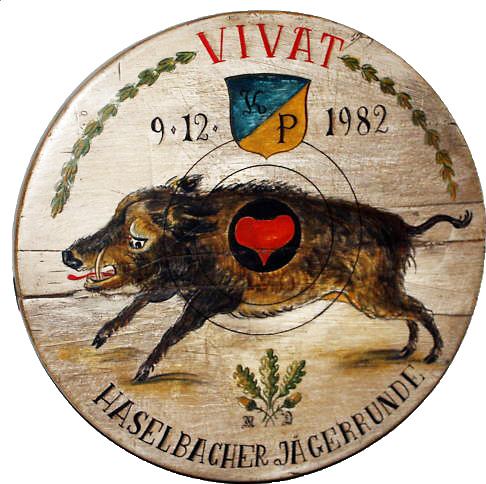A member of our Hasselbacher community asked me recently, "What does our name mean?" This is a different question than "How did we get our name?" For this latter question, I think we have an eminently supportable answer. As for the former, I too wondered my whole life what, if anything, my name meant. Although it took me a few years of research as I worked on this website, I am now pretty certain. I outline my adventure below.
When I was a small boy people would volunteer that my name had something to do with a rabbit crossing a brook. I found that image rather inadequate. For some time I told people, including my wife-to-be, that the name meant, "Wild Boar Killer." To me that sounded more manly, even if it was a construction pulled from thin air. In German, der Hase is a bunny or hare, but there is no letter 'L' in derived words like Hasenpfeffer. There is a beer from Augsburg called Hasenbrau whose logo includes a rabbit. I can confirm that it is very refreshing, but there is no 'L' in it as has there has invariably been in our name for 400 years. I also found the Hasenthäl, or "Rabbit Valley" Wappen you will see further on later page of this disussion.
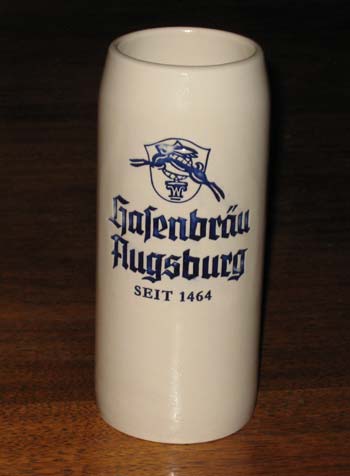
As for the "-bach" in "-bacher," I can conceive of no alternate meaning other than "small stream." Geography and a plethora of similarly named places makes this pretty clear. The "-er" on the end is a common convention to designate a geographic origin. Thus, John Kennedy was a Berliner when he meant to say "Ich bin Berliner." (What he actually said was, "Ich bin ein Berliner, which means a kind of doughnut!)
As I began to study our family history six years ago, it seemed to be most likely that the name stems from the hazelnut tree. I still think this is correct. In German, die Hasel (f) means hazelnut tree, and die Haselnuß is the word for hazelnut. Even the girl's name, "Hazel" is said to be derived from the Old English word for hazel nut.
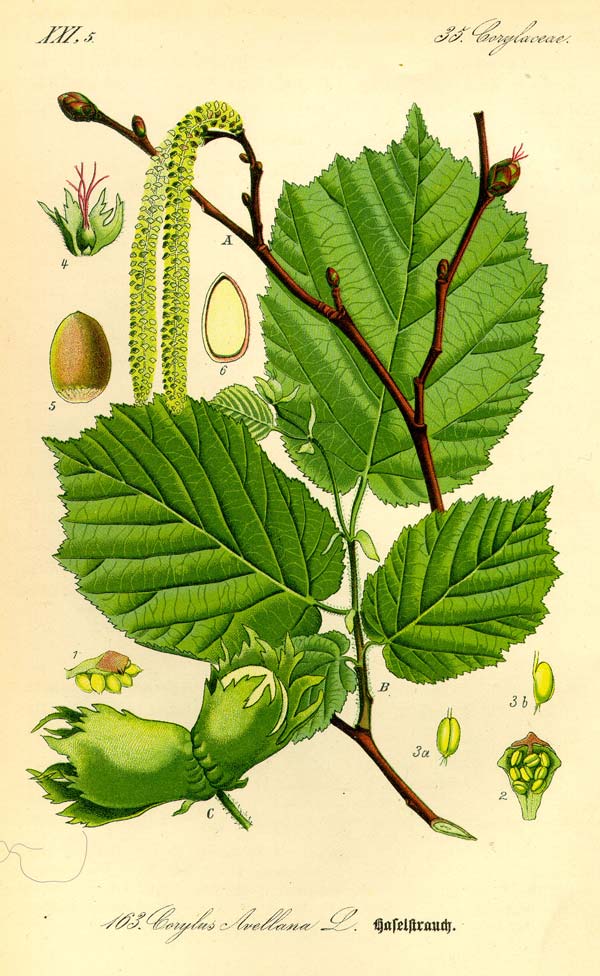
Nevertheless, my confidence was shaken a little a few years ago when I saw the following display at a fish festival on the Jakobplatz in Nürnberg.

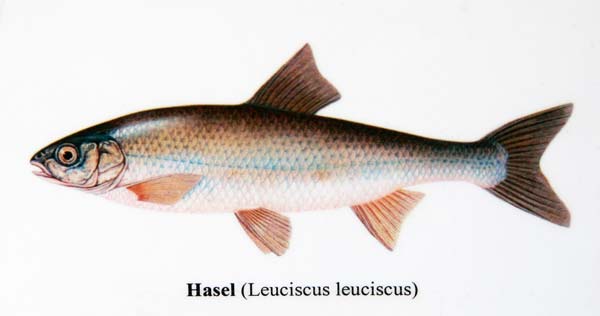
In German, der Hasel (m) is a kind of fish . In England, it is called the common dart. That a fish should be associated with a stream is hardly a stretch of logic. Thus, while when I was asked, I still spoke about hazelnuts, but in the back of my mind I was aware of this perfectly plausible fishy alternative.
The number of S's in our name has varied considerably geographically and over time: Haselbacher, Hasselbacher, and Haßelbacher. [And in more modern times; Hazelbaker and Haselbach!] How a single 's' turned into a double one in the spelling of our name is an interesting question. I do not think it has to do with the meaning of the name, but rather to regional linguistic transformations within the German language. I wish we had a knowledgeable expert to explain it to us. Even in the Austria of 400 years ago it seems there was a lack of uniformity in how the name was written. All Germans I have spoken to about this tell me not to get hung up on the "s" issue– so I will not here.
Because I did not have a scholarly answer to the question of "meaning" that initiated this missive, I did what we all do nowadays and made a search on the Web. I regret to say an hour or so of work did not initially help very much.
There are two dozen or so named places in Germany and Austria named Haselbach. I tried to find their town crests but could only find four. Two images featured a "bach." Two of them featured hazelnuts in their Wappen. (One of these I included on an early version of my home page. My wife calls this last one the "flaming hazelnut!) It is also conceivable that the second image below has the flowers of a hazelnut which is related to the burch family of plants. [I subsequently visited one of these villages Haselbach.]
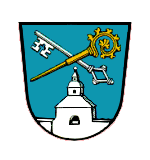
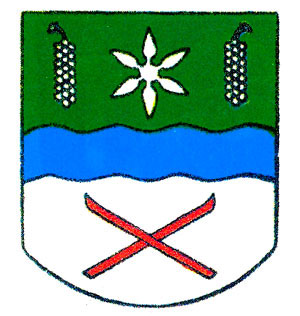
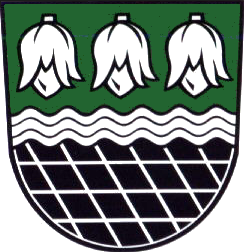
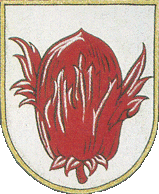
However, the last two hazelnut versions appear to be contemporary creations and are therefore not very definitive. The only other "Wappen" I found was that of a community fire company in Germany shown below. Perversely, it featured a rabbit jumping over a brook! This initially threw me for a loop, but in the end it turned out to be the exception that proves the rule as well as research adventure that was good fun. I tell the story of Haselbach in Paffroda here.
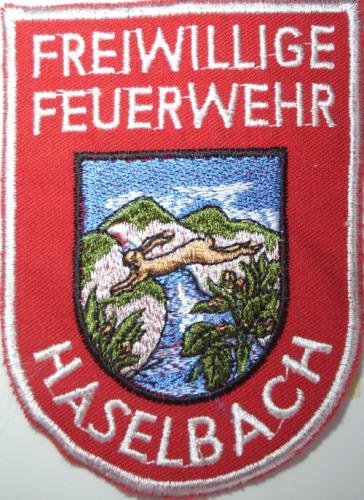
It is clear that there have been many places called Haselbach since well before the 1500s. As far as I have been able to tell, and with as yet no exception, all are linked to a stream or brook named Haselbach, with associated Haselnuß bushes.
If any of you have other information or speculation, let's hear from you.
Your Cousin,
Peter Hasselbacher, Haselbacher, Haßelbacher
Addendum 20 Apr 2010:
The wild boar issue is not quite dead yet!!
(At least in my imagination.)
Addendum 16 May 2010:
The Schützenscheibe (target) above is said to have come from the tiny vilage of Haselbach in Austria. I am still researching this matter, but a map of the village shows an interesting parallel to the geography of the Hasselbacher homeland in Gresten, Austria.
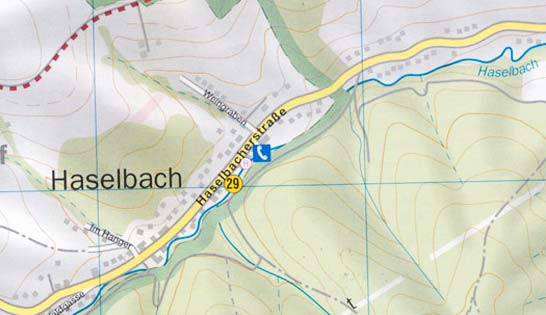
This village of Haselbach sits on the Haselbach stream which itself has carved out the Haselgraben (valley). A Gasthaus Haselbacherhof is located on Haselbacherstraße. (It is my understanding that the Schützenscheibe is associated in some way with the guesthouse: this will be fun to explore.) I suspect that other Haselbach villages and localities will also be associated with and named for Haselbach streams.
Further Addendum 10 Nov 2010
The speculation just above has proven itself true. I discussed elsewhere the best glass of beer I ever drank was Haselbacher beer brewed in Haselbach, Germany. However, despite other Haselbach-related geographic names in the vicinity, I could not find a map to identify a Haselbach flowing through the village. That is no longer true! I recently chanced on an old map of the area of Passau, and to my great pleasure found the Haselbach stream, just where it should have been.
Even more! 21 June 2012
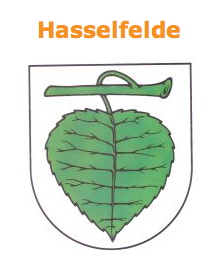 This is the wappen for the town of Hasselfelde in Germany. Their website relates its origins to the fields of Haselnuße present in the early days. It specifically comments that in early records, the name of the village was spelled Haselfelde with one 's.' This would be an example of how one 's' got transformed into two!
This is the wappen for the town of Hasselfelde in Germany. Their website relates its origins to the fields of Haselnuße present in the early days. It specifically comments that in early records, the name of the village was spelled Haselfelde with one 's.' This would be an example of how one 's' got transformed into two!
Hasselfelde = hazelnut field.
